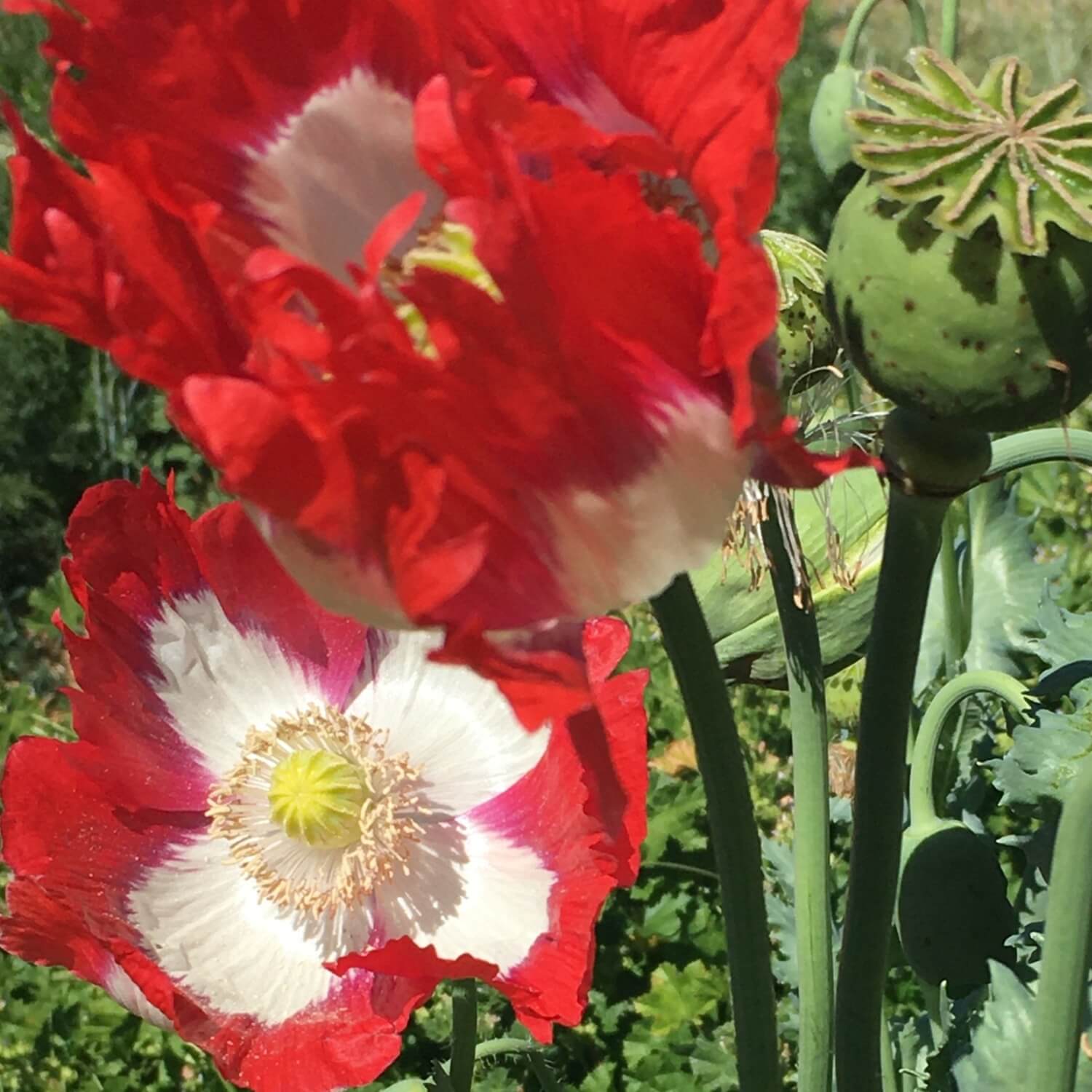
If I could be a plant, it might be corn. Being able to photosynthesis has always captured my imagination. Corn seems to be especially good at turning sunlight into golden sweetness andI love standing in the corn field during mid-tassle and silking while listening to the buzz of the honey bees collecting pollen.
Are you planning to grow corn this season? Understanding how corn pollinates is one key to successful cultivation. Corn is wind pollinated so those bees I just mentioned don’t actually do the bulk of the pollination. Instead the light pollen grains float on the wind to land on silk tassels below.
For this reason traditional advice is to plant your corn in a block, not a long row. By planting in a block the floating pollen pollinates the maximum ears of corn. Have you ever opened an ear of corn and found only half the kernels to be filled out and plump? This is a sign of poor pollination.
The silks are actually the stigma and style of the seed producing flower. Corn pollen falls on silks and travels down the inside tube to pollinate one single kernel. Amazing! Poor pollination can also result from excessive heat over 95F.
For this reason I also advise you to seek out short season corn varieties when you can. Try and plant your corn as soon as it is warm so it will produce its pollen before the sustained heat of late summer sets in. Most of our sweet corn varieties produce in 80-90 days so if you plant in mid May you can feast in early August.
For those who like eating corn for a longer period of time consider planting 3 to 4 successions of corn from May through June. Just be sure to plant 20-50 plants in each round for good pollination.
We use two main methods for planting corn:
Direct Sowing Corn
1. Prepare your garden. Enrich soil with compost. Corn is a nitrogen loving plant known as a heavy feeder. It is best planted after cover crops or low nitrogen using root crops.
2. Sow seeds about ½-1 inch deep. They are vigorous germinators and will reach for the sky quickly. I usually draw a shallow trench alongside the drip tape then sprinkle the seeds into this trench and backfill with soil. If you have enough seed, sow them every 4 inches and then thin to best spacing of 12-18 inches later after germination. Alternatively sow seeds at final spacing one at a time.
3. Final spacing for plants should be around 12-18 inches.
4. Sow seeds in a block, rather than one line.
5. Cover freshly sown seeds with row cover to keep birds off!
Or Start Seeds In Trays- (most people think of corn as something to always be direct seeded but I have had a lot of success starting it in 1 inch cells and transplanting. This allows you to get a bit of a jump on the season and plant early if your soils aren’t quite warm enough to germinate corn.)
1. Fill trays with 1 or 2 inch cells with potting soil.
2. Sow seeds about ½ inch deep and cover.
3. Allow seedlings to grow 2-3 inches tall then transplant to final spacing. This is important! Don’t wait until they are too tall or they will become stunted.
4. I like to cover new transplants with row cover to protect from birds!
With either method I like to mulch around my corn to keep the weeds down and conserve water. Corn is a thirsty crop, especially when they become large plants. Personally, I like to mulch and then transplant through the mulch. I usually lay my drip tape over the mulch for two reasons.
1. The drip tape keeps the mulch from blowing away.
2. I can keep an eye on the drip tape for leaks. Critters love to chew through the drip tape in mid-summer for water.
I think that is about it for planting. When it comes to harvesting and eating watch your corn for brown tassles. The ears should swell and feel firm through their husks.
At this stage if you are wondering if your corn is ready carefully pull back some of the husk and have a look, or even a nibble. A lot of sweet corn has a window of peak ripeness and if you leave it on the plant too long the ears will start to get starchy as the seed continues to develop.
Any more corn quesitons? Let me know!






